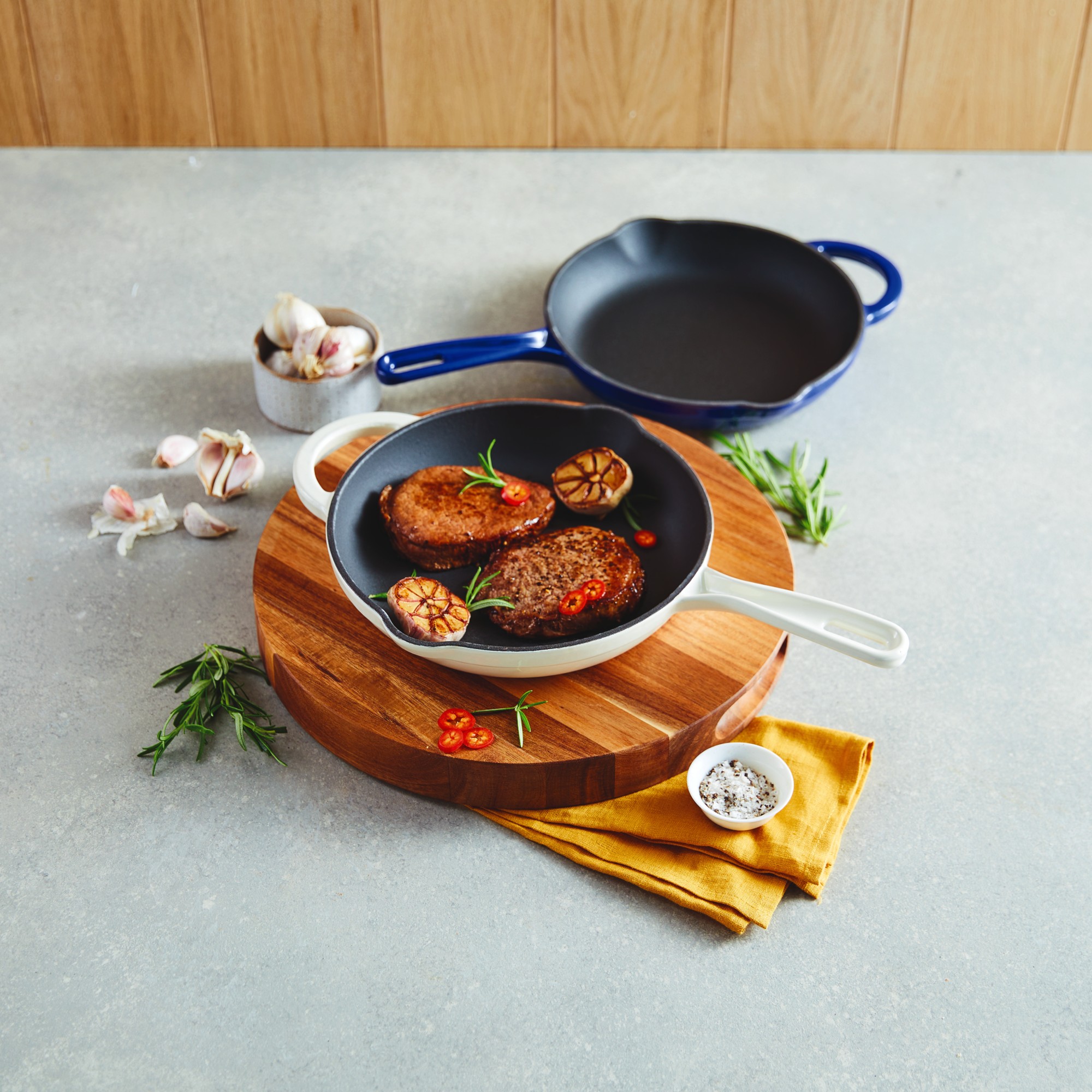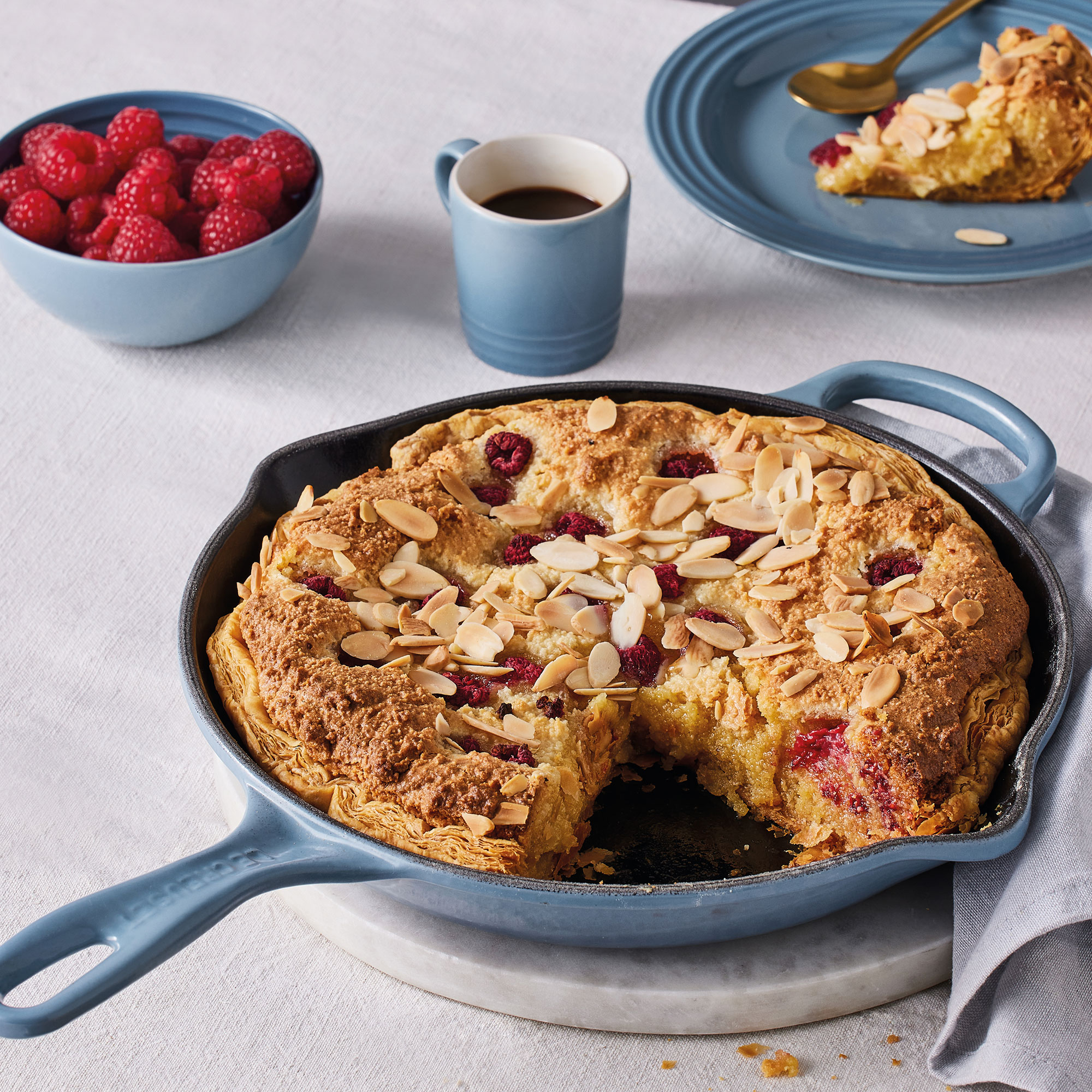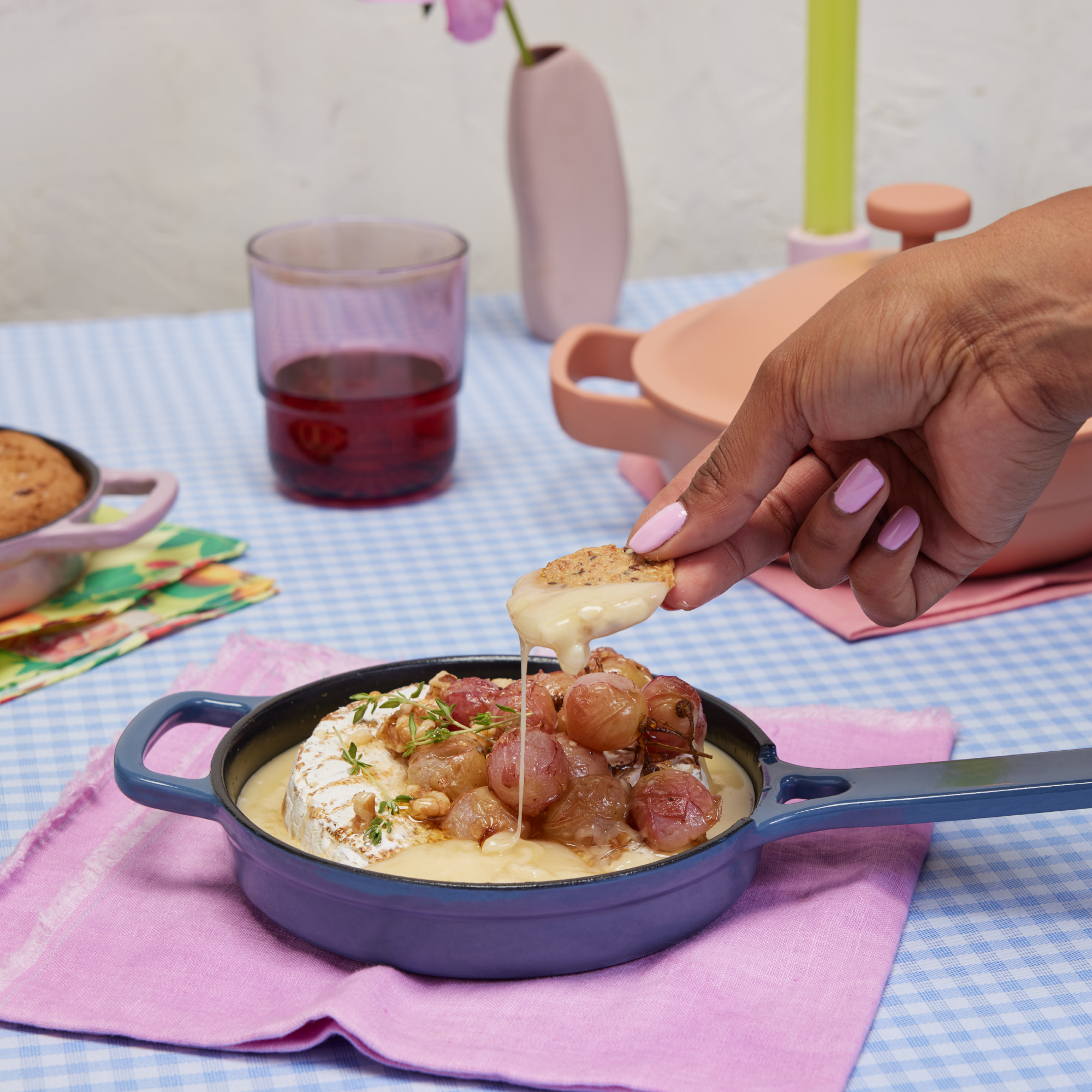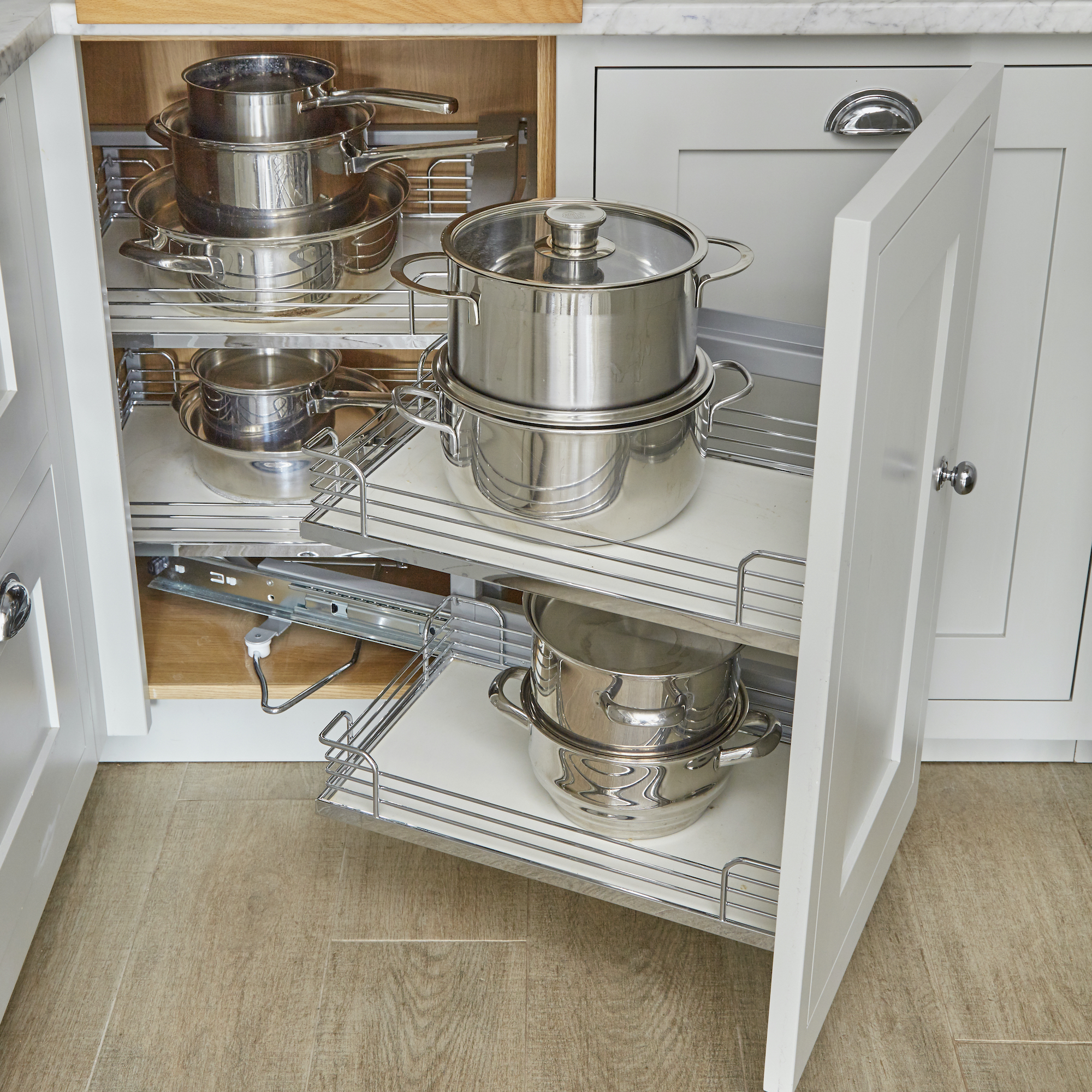
If you’re wondering how to clean and re-season a cast iron skillet, you’ve come to the right place. While brands like Le Creuset, Our Place, Staub, and ProCook introduced us to this high-quality cooking essential, budget alternatives are popping up and making cast iron skillets even more accessible.
But to make the most of the best cast iron cookware, it’s important to understand how incorrectly cleaning your cast iron skillet could result in the removal of its non-stick qualities and dark patina. Instead, you need to focus on a way of cleaning that maintains the integrity of a well-seasoned skillet.
To help you clean and re-season a cast iron skillet the easy way, we’ve spoken to industry experts with a wealth of cast-iron experience. By following this step-by-step guide, you can remove nasty smells and food debris from your cast iron skillet without losing its non-stick qualities.
How to clean and re-season a cast iron skillet
‘Cast iron pans are beloved in the kitchen for their versatility, durability and heat retention - this makes them perfect for everything from grilling, braising and baking to frying, toasting and searing on high heat,’ explains Thea Mathias, General Manager in the UK for Our Place. But how do you clean and re-season a cast iron skillet? Well, we’ve got you covered.

What you'll need
- Paper towels
- Washing up liquid
- Water
- Sponge
- Vegetable oil
Step-by-step
1. Wipe it down
If you’ve bought yourself a new cast iron skillet and already mastered how to season cast iron cookware, cleaning it should be a breeze. In fact, you don’t have to do much at all. That’s because a well-seasoned cast iron skillet will repel food debris and stop anything from sticking to it.
Therefore, the quickest way to clean a cast iron skillet is to wipe it down with a paper towel. You could even leave a little bit of oil in there if you wanted to, as this oil will ultimately increase the longevity of your cast iron skillet.
But if your seasoned cast iron skillet is starting to lose its patina, losing its non-stick qualities, or you’ve noticed rust forming, you need to move on to the next step.
You should only do this when your skillet is completely cool, though. A rep from Le Creuset told us, ‘Allow your skillet to cool to room temperature before cleaning, and rinse away any food residue.’

2. Clean with warm water and washing up liquid
There are many things you shouldn’t put in a dishwasher, and a cast iron skillet is one of them. Rob Falconer, Head of Range at ProCook, seconds this, saying, ‘We recommend that you avoid putting your cast iron cookware in the dishwasher and wash it by hand instead. Although using a dishwasher to clean items from our cast iron range will not affect their performance, it may result in the dulling of the enamel over time.’
In fact, you should never soak a cast iron skillet in water, either, as this will undoubtedly cause it to rust.
But when your cast iron skillet needs a deeper clean, you have no option but to get some soap and water involved. To do this, soak a kitchen sponge with water and add some mild washing-up liquid onto the soft side. You can then start cleaning your cast iron skillet.
Where possible, you should avoid using any abrasive tools during this step, as this could scratch off even more of the coating and leave it susceptible to rust.

Paul Bough, STAUB’s Resident Chef, explains, ‘Never use a scouring pad or metal scrapers to clean your cast iron skillet as these can be too harsh, instead use a soft sponge or cloth.’ But if you do need to use the scourer side of your kitchen sponge, just make sure that you don’t scrub too hard.
You can then rinse the pan to remove the soap suds. However, you may need to take an extra step if you have particularly stubborn stains, and Paul has the perfect solution for that.
‘If food is really burnt on, then simmer gently with bicarbonate soda dissolved in warm water. Once cooled, rinse and wash with soapy water,’ he explains.
Please note: You could swap the washing-up liquid with salt if you have particularly stubborn stains on your cast iron skillet, but this may be too coarse and abrasive for this cleaning task. So, proceed with caution if you choose this option.
3. Dry the skillet on the hob or in the oven
When you’ve rinsed your cast iron skillet, and you’re confident that it’s as clean as possible, you then need to dry it. However, you should never let a cast iron skillet air dry or use a tea towel for this step.
Instead, you need to dry the skillet on the hob or in the oven. It’s up to you which option you go for, but you should heat it up that way until the skillet is completely dry. This is normally around 10 minutes if you use the oven and about 5 minutes if you use the hob.

4. Coat the whole skillet in vegetable oil
It’s important to re-season your cast iron skillet every time you clean it, so for this next step, you’ll need to grab your vegetable oil.
Hannah Richards, Brand Manager for Stellar, explains, ‘After every wash, apply a very light layer (1-2 drops only) of vegetable oil to the surface of the pan, rubbing in gently with kitchen paper or a dry cloth.’
5. Heat up on the hob or in the oven
To successfully re-season your cast iron skillet, you need to heat it up once more. You can either do this by heating it up on the hob or popping it back in the oven.
‘Turn on the hob and heat gently until smoke appears then turn off and allow the pan to cool to room temperature. Wipe off any excess oil before storing. This process will help to reseal the patina and keep the surface free from rust,’ says Hannah.
When the cast iron skillet looks shiny all over, and the smoking has stopped, your cast iron skillet is officially re-seasoned.
6. Store it correctly
While our minds are still blown by the Le Creuset pan-stacking hack, storing your cast iron skillet properly is a whole different story.
It’s important to store your cast iron cookware correctly, as incorrect storage could result in damage to the kitchen essential itself - as well as the seasoning.
Paul says, ‘Avoid stacking cast iron skillets inside each other when storing, as this can chip the enamel.’ So, make sure you have enough space in your kitchen cupboards to give your cast iron skillet the room it needs.
7. Repeat when recommended
How often should you clean a cast iron skillet? Well, that all depends on how often you use it. Ideally, you should aim to wash your cast iron skillet after every use, as this will prevent food build-up and keep it in tip-top condition.
But this isn’t necessary if you only use your cast iron skillet to fry up some crispy onions as a meal topper or cook some plain vegetables.
If you can see visibly see that it doesn’t need a cleaning, you could get away with simply wiping it with a paper towel.
If you’re going to clean your cast iron skillet after every use, it’s also a good idea to re-season it after every use, too. This will protect and maintain the patina and the non-stick coating after the cleaning session, but you don’t necessarily have to stick to this strict rule.
Generally, experts suggest re-seasoning a cast iron skillet at least once a month.

FAQs
How do I clean and reseason my cast iron skillet?
First, clean a cast iron skillet with a soft sponge, washing-up liquid, and some water. Avoid soaking your cast iron skillet if you can, and instead focus on rinsing and washing off the food debris and any burnt crumbs.
When you’ve done that, dry it off on the hob or in the oven before coating the inside and the outside of the cast iron skillet with oil. You can then pop it back in the oven or heat it up on the hob and continue to do this until the skillet stops smoking.
What is one thing you should never use to clean and season a cast iron skillet?
You should never use steel wool when cleaning or re-seasoning your cast iron skillet, as this extremely abrasive cleaning tool will ultimately remove any seasoning left behind. This leaves the skillet open to water exposure and rust, which will drastically affect the integrity of the cooking tool.
What is the best oil to season cast iron with?
Vegetable oils are generally considered to be the best oil to season cast iron with, and rapeseed oil is often recommended by cast iron skillet manufacturers. However, any vegetable oil should do the trick.
Knowing how to clean and re-season a cast iron skillet should help it last for decades!







